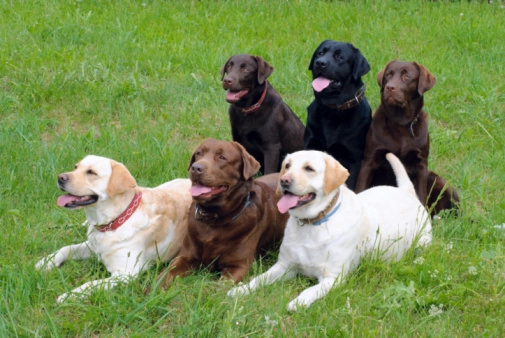Hypoglycemia can get Quite Serious!
The toy breeds, especially are at significant risk of developing the condition, possibly accompanied by low blood sugar, which can potentially be harmful to the dog. When a dog’s blood sugar level drops, it can affect the dog’s neurological functions. As an aftereffect, the dog can suffer from tremors, coma, and disorientation.
Generally, hormones prompt the breakdown of glycogen, which is stored in places, and helps them to reach the bodily tissues, especially in the brains, to fuel the daily activities. A majority of toy breeds, don’t have the process at a fast pace. Thus hypoglycemia can occur.
A variant of the condition, juvenile hypoglycemia, happens in puppies, less than three years of age. Their little body makes them unable to control the natural concentration of blood glucose level. Young pups need a high level of glucose, or else they can become vulnerable. Some other causes like malnutrition, cold, stress, along with intestinal parasites can also ignite the condition.
Which Breed(s), other than Toy Breeds are at risk of this condition?
Races, who use a massive amount of energy, like working and hunting dogs, and pregnant mothers are at enormous risk of suffering from the condition.
Signs
General signs and symptoms of hypoglycemia are:
-
Disorientation
-
Frequent tremors
-
Twitching of the muscles
-
Prolonged weakness
-
Instances of seizures
Most canines will keep themselves at bay, from drinking and eating, when they suffer from low sugar content.
Cases of Hypoglycemia happens, when:
A dog has an excessive active life, full of exercise sessions, and other stuffs. Or have prolonged breaks in between meals. Frequent fastings before exercises is another addition to the causes. All these beforementioned causes trigger the condition. Hypoglycemia can also occur as a secondary condition to a primary disease.
Some Major Causes are:
-
Addison's disease
-
Tumors in the pancreas
-
Massive abnormality of the liver
-
Conditions which affect the glycogen storage
If there’s an underlying cause(s) for the illness, the vet will first fix that/those.
Diagnosis
Most vets, during the initial diagnosis process, ask for a complete health history of the affected dog. Followed by some physical examinations, to determine the causes in the dog, which might have ignited the condition. Some other notable tests are whole blood count, the concentration of blood glucose, analysis of urine, routine biochemistry profile, and a concentration of blood insulin. The vet may conduct an ultrasound of the abdomen. It will enable the to vet to understand any pancreatic issue, especially the presence of a tumor, which can potentially be fatal for the dog.
Immediate Aid
Be it an adult dog, or a young puppy; if suffers sudden coma, while having a hypoglycemia attack, the affected animal will need an immediate supply of sugar water or an oral concentration of glucose, such as Nutri-cal or corn syrup.
Treatment
There are two types of treatment. One of them is given, when the condition reoccurs, to help the body increase the blood glucose level, immediately. The next option for treatment includes treating the underlying causes, for the illness.
The primary treatment for the disease includes dealing with the underlying causes. The fundamental way of treating the disorder consists of the consumption of glucose in any form. In some cases, the absorption power of glucose in the body gets hampered. Thus, administration of glucose will be through the intravenous medium.
For the treatment of the underlying causes, the vet may suggest simple medications, or if a tumor exists, then treatment for the same. According to the test results, the vet will recommend treatments for the patient.
Costs for Treating the Condition
We cannot exactly determine the exact costs of treatment for hypoglycemia, as the intensity of the condition varies from dog to dog. For an initial consultation, including blood glucose test, and glucose syrups, the cost will be, somewhere between, $80-$200. If the need for intravenous glucose arises, then the price will add up to $100-$200.
Treatments for the underlying causes will need the help of medical therapy and surgical intervention, and will begin from $800. Continuation treatment may be necessary. Thus, the total treatment cost can range between $1000-$8000.
Prevention
Breeders should actively take interest in preventing the condition in dogs. Feeding of young toy-breed pups should be a frequent task. Owners of toy-breeds will need to have a ready supply of glucose supplements. During an emergency situation, constantly dabbing under the tongue of the patient will aid in the recovery process. This trick works like magic, to help the blood absorb glucose.
.png)





